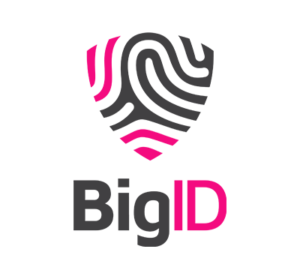By Amy Jordan, senior program manager, content marketing at Indeed
Increasing reliance on AI in recruiting is changing how job seekers and employers interact in the hiring process. Talent acquisition (TA) leaders are adapting to the challenges of rapidly evolving technology, anticipating future changes, and figuring out best practices on the fly.
TA professionals actively listen to job seekers’ questions as these technologies are deployed. During a recent Indeed Leadership Connect cohort, where like-minded TA leaders come together to share challenges and solutions, AI technology in recruiting was the main topic.
Here are five top concerns participants raised and expert insight for better hiring with AI from Indeed’s senior director of responsible technology, Trey Causey.
How do hiring professionals respond to job candidates who are also using AI?
As AI adoption increases, job seekers use AI “copilot” tools at every step of the recruitment process, from optimizing resumes and mass-submitting applications to enhancing performance with perks like mock interview preparation. But many TA leaders worry about losing AI-powered efficiency gains to new hiring norms that pit bots against bots.
The solution? Don’t reproduce old hiring processes and let AI handle them, according to Causey. Now is the time to pivot or reinvent parts of the interview process to hire better with AI.
Focusing on skills and capabilities rather than traditional resume items such as degrees or experience will help better evaluate candidate potential and suitability, even with AI. Using AI in hiring can also free up time to dive deep into each candidate’s ability during interviews by assessing qualities like soft and problem-solving skills.
“We often think about things we can automate, but technological innovation enables new things to happen that you haven’t done yet,” Causey said. “The question to ask is: ‘What couldn’t we do before that we can do now with access to new tools?'”
How does a company get buy-ins from its recruiting team on new AI tools?
One of the biggest hurdles in implementing AI in TA is getting individual recruiters to use the tools consistently. As one Leadership Connect TA leader said, “I want the race car, the most technological. But I need to teach my team how to drive first. Top of mind for me is, how do I thoughtfully introduce this technology and engage my team … from a learning-curve perspective?”
Gradually introducing AI tools through pilot programs can help overcome this challenge. Involve teams from the beginning and provide open channels for feedback so select recruiting teams can gain confidence in employing the new technology. Encouraging AI adoption in a limited capacity can enable a greater internal understanding and buy-in, identify challenges, and create champions before initiating a full rollout.
How do you balance automation with a human-centric candidate experience?
Although AI can boost hiring efficiency and results, maintaining balance with a human touch is crucial for candidate satisfaction and engagement while promoting equitable hiring practices.
Think of AI as a recruiting assistant, acting as an initial review in the sourcing process while humans make the final decisions and interactions. In turn, AI can serve as a recruiting “superpower” that boosts productivity and results.
When using AI tools to generate external-facing content, always include human oversight to mitigate the risk of irrelevant or biased content. Instead of using extensive, unmodified AI-created text in communications, customize content suggestions to the company’s unique voice and communication style. This still saves time versus starting from scratch — and the more you use AI technology, the smarter it becomes.
How do you measure the impact of AI recruiting tools?
Metrics play a crucial role in evaluating the effectiveness of AI in recruiting. Despite technological advancements, the primary indicators of success in the hiring process remain the same: quality candidates, conversion rates, and candidate satisfaction.
Causey recommended using these metrics to measure efficiency improvements, but additional benchmarks may become relevant in the long term.
“It takes a while to determine how to measure the impact of new technology,” Causey said. “As AI creates new capabilities, we may discover that better candidate matching is beneficial not only for hiring but for retention and morale, for example.”
Measuring outcomes requires a forward-thinking approach and willingness to explore new indicators of success that might emerge as traditional metrics are being tracked.
What are some best practices for using AI responsibly in recruiting?
Many companies are forming AI ethics committees to define principles, set guidelines, and assess new technologies.
In addition to ethical guidance, offering a recruiting team proper education and training can promote responsible and safe use of generative AI. One option would be to provide an AI training series based on company guidelines and implement mandatory assessments to ensure understanding and compliance. If an organization has established a team or committee that oversees AI ethics, encouraging employees to engage with them would help a workforce better navigate potential bias and risks.
Key takeaways:
- Think beyond automation with AI; use the efficiency gains to rethink parts of your hiring process.
- When it comes to getting recruiters to buy into AI-powered technologies, go slowly and steadily. Educate and engage your team through pilot programs, then roll new technology out on a broader scale.
- While existing metrics like candidate quality and time to hire are still helpful for measuring recruiting results, stay open to new indicators of success as AI technology evolves.
Learn how Indeed is making hiring simpler, faster, and more human.
This post was created by Indeed with Insider Studios.
Disclaimer: The questions and concerns reflected in this article are from real HR and TA leaders regarding the use of AI in hiring in general, and are not specific to Indeed and/or its products and services. In addition, all information featured on Lead with Indeed is for general informational purposes only and does not (nor is it intended to) constitute legal advice.


